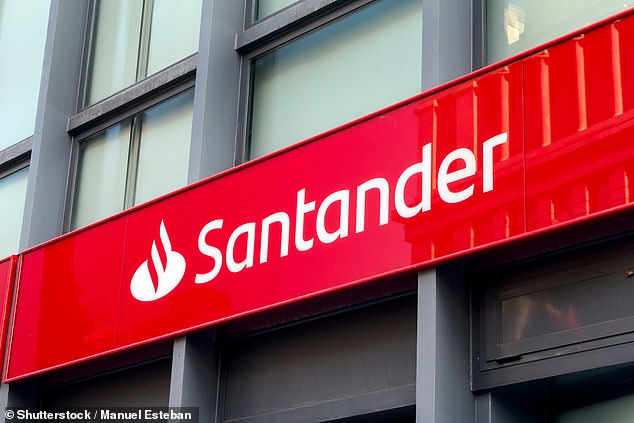Have you seen a gift on Facebook? Santander will block the purchase unless you have seen it in person
Many legitimate Facebook Marketplace sellers accept cash at the door if you pick up the item in person
Santander is blocking customers' payments while shopping on Facebook Marketplace unless they tick a box saying they have personally seen the item they are buying, Money Mail has revealed.
The number of scams on the platform – where anyone can list items for sale – has skyrocketed this year.
More than 7,000 Santander customers have reported losses of £6.5 million to fraudsters on the site, a 50 percent increase on last year.
Anyone who tries to pay for an item on Facebook Marketplace using Santander's online banking app will see their payment frozen unless they confirm they've seen the goods.
Bait: Popular items used in Facebook Marketplace scams include designer shoes, Moncler gloves, jeweled necklaces, coffee machines, expensive watches and Le Creuset jars
However, checking the box can weaken a customer's chances of getting a refund if it turns out to be a scam and he or she didn't see the item beforehand.
Santander says it will still investigate the circumstances, in case the victim is vulnerable or socially manipulated into giving the bank false information.
Banks currently bear the costs of reimbursing victims, so they are continuously working to remove existing barriers to prevent scams.
Money Mail has been warning for months that customers have no protection when buying items on the trading site.
Our Stop The Social Media Scammers campaign has called for the establishment of a secure payment system on social media platforms to protect users.
In some cases, items on Facebook Marketplace never appear after payment, leaving users without funds.
Santander, which made the change last week, is the first bank in Britain to select the site within its payment systems.
When customers buy goods online, they first see a warning that says: 'About 70 percent of all scams we see are people making payments to buy goods online.
“We want to help protect you from these scams by giving you important information.”
They are then asked to select which online site they will purchase the item from. By clicking on Facebook Marketplace, customers will see a tailored scam warning about the risks of shopping through the platform.
It says: 'This is a high risk payment. Facebook Marketplace has a policy to protect you from scams. It says you shouldn't send money directly to a seller's bank account.
'Instead, you should use a secure person-to-person payment such as PayPal. Please check the item in person before paying for it. Please ensure that the item is genuine and not counterfeit, that it is in the condition you expected and that it works as described.
'Facebook Marktplaats does not offer any protection for you as a buyer. If you pay before collection, you run the risk of losing your money.'
When they click continue, customers are asked to answer, “Have you seen the item in person?”, by checking one of three: “yes,” “no,” or “yes, a photo or video.”
Those who don't check the 'yes' box and pay securely (by making a credit or debit card payment or using PayPal) will not be able to forward the money to make the purchase.
In Britain, Facebook Marketplace does not have a built-in payment service, unlike eBay or PayPal, while Amazon uses a credit and debit card payment facility.
So shoppers typically use bank transfers to send money directly to merchants, leaving them much more vulnerable if something goes wrong.
PayPal offers buyers recourse if there is a problem with their purchase, while buyers using a debit or credit card can file a claim with their card provider for a refund if something goes wrong.

More than 7,000 Santander customers have reported losses of £6.5 million to fraudsters on Facebook Marketplace
Many legitimate Facebook Marketplace sellers accept cash at the door before pickup. Chris Ainsley, head of fraud risk management at Santander, says:
“Customers are losing more than ever to criminals on Facebook Marketplace and as Christmas approaches we can expect this to increase even further.
'Building on existing measures to protect customers, this latest step will make our customers think twice before handing over money to potential fraudsters.'
Payments are processed for those who say they saw the item in person, but they are still warned that their money may be at risk.
Shoppers between the ages of 18 and 25 are more likely to fall victim to Facebook scams.
Over-60s are the second most likely age group, but tend to lose the biggest amount, with an average of £2,450 per scam, the bank warns.
Some links in this article may be affiliate links. If you click on it, we may earn a small commission. That helps us fund This Is Money and keep it free to use. We do not write articles to promote products. We do not allow a commercial relationship to compromise our editorial independence.
